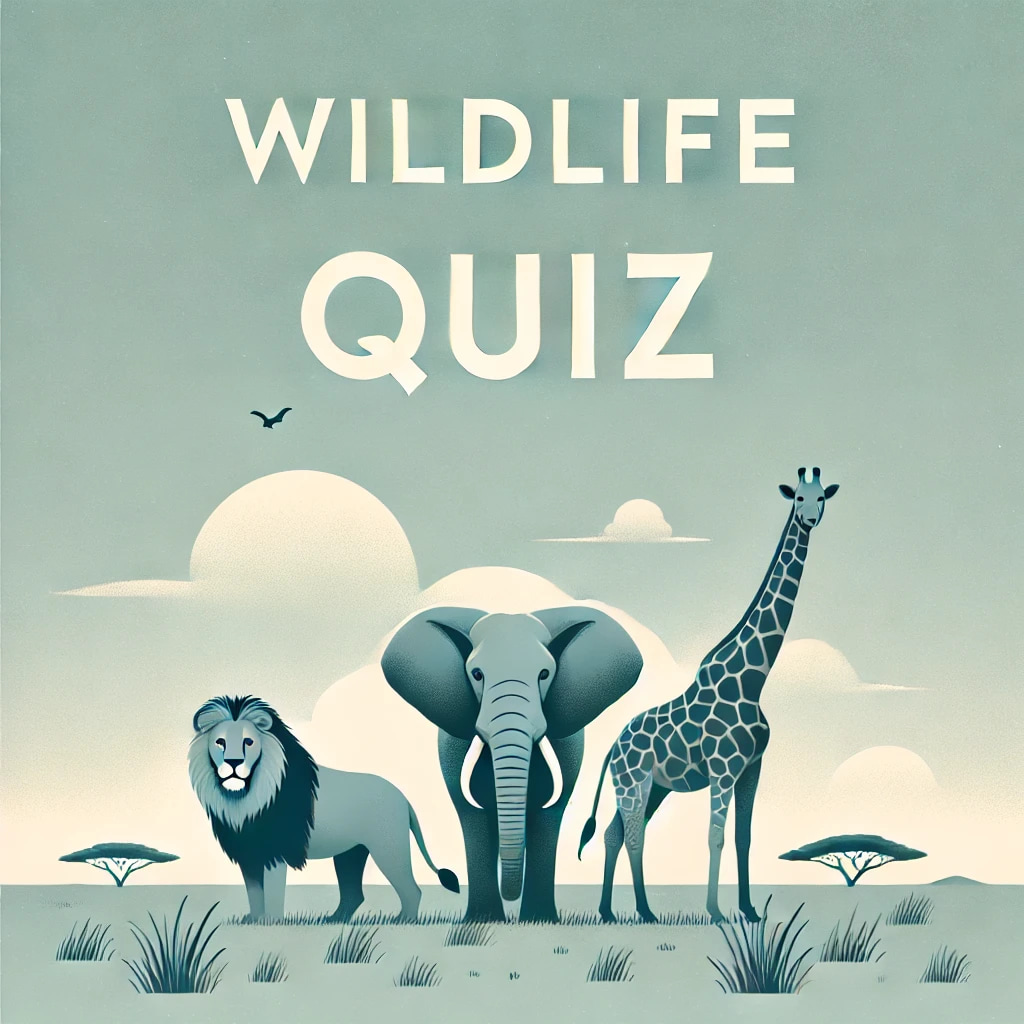Q1:What is the largest land animal on Earth?
A1: Elephant
Q2:Select all of the following that are marsupials:
A2: Kangaroo, Koala
Q3:Arrange these animals from smallest to largest:
A3: Elephant seal, Giraffe, Blue whale
Q4:Match each bird to its characteristic:
A4: Penguin → Cannot fly, Eagle → Excellent eyesight, Hummingbird → Rapid wing flapping
Q5:Use some of the following answers to fill in the blanks: Options: camouflage, hibernation, migration, nocturnal
A5: nocturnal
Q6:Which mammal is known for its ability to echolocate?
A6: Bat
Q7:Select all of the following are endangered species:
A7: Amur leopard, Black rhinoceros
Q8:What is the primary diet of a panda?
A8: Bamboo
Q9:Arrange these habitats from driest to wettest:
A9: Desert, Tundra, Savanna
Q10:Which of the following is a venomous snake?
A10: Black mamba
Q11:Use some of the following answers to fill in the blanks: Options: apex predator, keystone species, migratory, solitary.
A11: The tiger is an *apex predator* in its ecosystem.
Q12:What is the fastest land animal?
A12: Cheetah
Q13:Select all of the following are types of bears:
A13: Polar bear, Grizzly bear
Q14:Which reptile is known for changing its skin colour?
A14: Chameleon
Q15:Match each animal to its primary habitat:
A15: Polar bear → Arctic tundra, Camel → Desert, Gorilla → Rainforest
Q16: What is the primary threat to coral reefs?
A16: Climate change
Q17:Select all of the following are types of big cats:
A17: Lion, Leopard
Q18:Which marine animal is known for its intelligence and complex social structures?
A18: Dolphin
Q19:Arrange these animals by their typical lifespan, from shortest to longest:
A19: House mouse, Rabbit, Domestic cat
Q20:Select all of the following are amphibians:
A20: Frog, Salamander
Q21:What is the primary reason for the decline in bee populations?
A21: Pesticide use
Q22:Select all of the following are types of primates:
A22: Chimpanzee, Gorilla
Q23:What adaptation helps polar bears survive in cold environments?
A23: Thick fur
Q24:Use some of the following answers to fill in the blanks: Options: apex predator, herbivore, omnivore, scavenger
A24: Lions are considered *apex predators* in their ecosystems.
Q25:Which animal is known as the king of the jungle?
A25: Lion
Q26:Select all of the following are nocturnal animals:
A26: Owl, Bat
Q27:What is the main diet of a koala?
A27: Eucalyptus leaves
Q29:Select all of the following are flightless birds:
A29: Penguin, Ostrich
Q30:What is the term for animals that are active during the day?
A30: Diurnal
Q32:Which animal has the longest migration of any mammal?
A32: Gray whale
Q33:Select all of the following are insectivores:
A33: Hedgehog, Bats
Q34:What is the primary function of a peacock's tail?
A34: Mate attraction
Q35:Match each animal to its primary food source:
A35: Panda → Bamboo, Polar bear → Seals, Rabbit → Grass
Q36:Which animal is known for having a long neck to reach high foliage?
A36: Giraffe
Q37:Select all of the following are types of marine mammals:
A37: Dolphin, Whale
Q38:Which animal is known for its distinctive black and white stripes?
A38: Zebra
Q39:Match each animal to its primary mode of locomotion:
A39: Kangaroo → Hopping, Fish → Swimming, Cheetah → Running
Q40:What is the primary sense used by bats for navigation?
A40: Echolocation
Q41:Select all of the following are herbivores:
A41: Cow, Elephant
Q42:What is the main purpose of a bird's beak shape?
A42: Feeding specialisation

